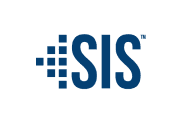Unravel the Complexities of RCM
We understand the frustrations of RCM all too well.
That's why we've made it our mission to untangle the threads and weave a seamless solution. With our unrivaled expertise, cutting-edge technology, and collaborative approach, we empower you to achieve steady cash flow and optimize efficiency across your entire clinical and financial operations.
With a proven track record of success for over 20 years and a client base spanning across the nation, we have established ourselves as a trusted partner for healthcare organizations seeking to transform their financial performance.
The outcome? An experienced RCM partner that accelerates cash, reduces admin burdens, and lets you focus on delivering top-notch patient care.
Ready to untangle the knot and strengthen your financial future?
Features
Our expertise, your advantage: industry-leading revenue cycle management solutions tailored to you.

Innovate RCM with the Right Tech
The key to all healthcare revenue cycle management is connecting systems and improving their value for your team. Our experts help you build the best solution for your specific needs.

Increase Revenue Reliability with an Experienced Partner
Ensuring cash flow is consistent and predictable means you can focus on care delivery. Let our team design processes and strategies to make this a reality.
Optimize Financial Operations with Tailored Expertise
Every organization and specialty has unique revenue cycle management challenges. Trust in our expertise to deliver practical, adaptable solutions for financial efficiency.
Why Leading Healthcare Organizations Partner With Us
The Coronis Way
Unique in every way, The Coronis Way redefines the RCM experience. Improve profitability, convert more A/R to cash, and work more efficiently. Our experts work as part of your organization and culture. With this customized set of services, you gain transparency, robust reporting, and data-driven intelligence.
High-Performance Technology
Our modern technology combines AI, automation, and integrations. These components connect with your current software and EHR platform. The result is a revenue cycle management workflow that delivers insights, ensuring you can understand your business today and in the future.
Decades of Niche Experience
Strategic collaboration with leaders in revenue cycle management ensures we understand your organization’s competitive landscape and nuances. These insights elevate your revenue potential.
Financial Clarity and Prosperity
Begin your journey to more predictable revenue by assessing your current RCM workflows. You’ll receive information on trends, competitive analysis, and business intelligence. Having this data ensures you can achieve and exceed benchmarks to welcome financial growth.


Revenue Cycle Management Solutions Aligned to Your Specific Needs
Community Health
Our experience with community health center RCM allows you to focus on your mission while we manage their numbers.
Learn MoreHealth System
Health system RCM has many dimensions; with Coronis Health, you get a transparent, data-driven approach.
Learn MoreHospital
Tailored billing and RCM solutions enable you to achieve financial independence and compliance.
Learn MoreHospital-Affiliated
Hospital-affiliated RCM has distinct complexities; our team simplifies it to ensure financial equity for all.
Learn MorePhysician Group
We work with any specialty, weaving in RCM experts, technology, and proven processes to improve financial performance.
Learn MoreEliminate Challenges and Gaps with Modern Medical Coding and Billing
Take Control of Your Finances
Deploy customized, data-driven solutions to accomplish your financial goals.
Put Your Patients First
Prioritize care delivery over admin hassles with our coding and billing services.
Stay Up-to-Date with Ease
Be confident you’re always compliant with changing regulations as our customer.
Enjoy Complete Transparency
Obtain visibility into all claims and billing activities with RCM solutions that clarify every part of the billing workflow.
Get Rid of Tedious Tasks
Employ automation and AI integrated into your current tech stack without requiring staff to learn a new platform.
Gain Direct Access to Experts
Collaborate with RCM experts to ensure your organization is proactive and prepared in an ever-changing industry.
Create a Connected Ecosystem with Our Software Agnostic Platform
We support the integration of EHRs, practice management systems, charge capture applications, and more!





























See what clients say about us
“Since day one, we have seen a major increase in productivity, collections, and AR follow-up. They have demonstrated their ability to adapt, be great team members, have strong customer support, and respond kindly to our needs.”
49 Bed STACH, New Mexico
Coronis Health offers experienced, often more qualified, professional staff at affordable rates. Additionally, they guarantee a minimum level of productivity and are very focused on our ROI and the quality of their work.
Healthcare CFO
Hendersonville, NC
Coronis has been the greatest partner in this healthcare environment. Their deep bench smoothly handles the complexities of insurance and billing challenges so we can focus on our patients. We have been using Coronis for 10 years, and we only wish we had been using them earlier!
Sean Adams, MD
Dupage Valley Anesthesiologists, LTD
It's one of the best decisions we have ever made. For nearly 15 years, our collections have remained incredibly consistent, our first pass rates high, and our percentages above industry standards. The team has always been highly responsive, easy to work with, and on target. I would recommend Coronis for any practice wanting to take control of the revenue cycle. We simply don't worry about collections.
North Carolina Orthopedic Specialist
As a busy primary care physician, I depend on two things to make our practice financial operations run smoothly. Timely, accurate, and reliable data and dependable and friendly service. Coronis had always provided both for me. Tapping into this has helped me achieve a better mastery of my daily operations and plan ahead for my practice's long-term strategy. This combination of accurate, unique financial data and accessible, friendly service has allowed our practice to survive and thrive.
Paul Ehrmann
Coronis has drastically changed the way we do medical billing. It's like having a billing department in-house.
Orthopedic Surgeon
Los Angeles, CA
Honesty, persistence, and top-notch customer service are my top requirements for a billing service. Coronis has excelled consistently for the five years I've worked with them, even when tackling recent challenges such as out-of-network billing and the mass confusion resulting from the insurance exchange.
Orthopedic Surgeon, Beverly Hills, CA
Coronis Health has been excellent in assisting with our billing needs. We are a growing practice. Coronis works diligently alongside us to conquer the obstacles we face. Many businesses aren't aware of the benefits of an outsourced billing company. We see magnificent results in the maximum reimbursements we receive. We are impressed with the care given to our account and highly recommend them to anyone in the market. Coronis is a wonderful asset to our team; we are so thankful to have them!
Natural Beginnings Birth & Wellness Center, North Carolina
Coronis Health is not just a billing service provider to us. I have confidence in their ability to manage our revenue cycle and assurance they truly care about the success of our clinic. The relationship my staff and I have with the Coronis team resembles a unified organization with one mission. The support I receive through analytics and the fact that our AR consistently blows industry KPIs out of the water, has given us the financial health to grow our practice and continue to serve our community.
Columbia Skin Clinic, South Carolina
We are happy that we switched to Coronis Health. They are dependable and easy to reach. Our revenues since switching have improved, and we gladly endorse them.
Internist
Port St. Lucie, FL

